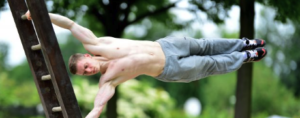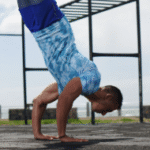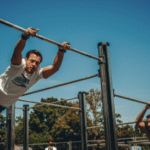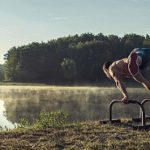The Ultimate Guide to Cold Plunging
Cold plunging, also known as Cold Water Immersion (CWI) or taking an ice bath, is the practice of deliberately immersing your body in cold water (typically below 60°F / 15°C) for a short duration. Once niche, it has surged in popularity across the USA within athletic, wellness, and biohacking communities for its purported physical and mental health benefits. This guide will walk you through everything you need to know.
- Why Take the Plunge? Potential Benefits
People engage in cold plunging for a variety of potential benefits, though the scientific evidence varies in strength for each:
Physical & Recovery Benefits:
Reduced Muscle Soreness (DOMS): May help alleviate delayed onset muscle soreness after intense exercise by reducing inflammation and constricting blood vessels.
Decreased Inflammation: The cold causes vasoconstriction (narrowing of blood vessels), which can limit the inflammatory response in tissues, potentially beneficial after acute injury or strenuous workouts.
Faster Perceived Recovery: Many athletes report feeling less fatigued and recovering faster between training sessions.
Potential Metabolic Boost: Exposure to cold forces the body to work harder to maintain its core temperature (thermogenesis), which burns calories. It may also activate Brown Adipose Tissue (BAT) or “brown fat,” which is more metabolically active than white fat, though the long-term impact on weight management is still under research.
Mental & Neurological Benefits:
Increased Alertness & Focus: The shock of the cold triggers a significant release of norepinephrine, a neurotransmitter involved in focus, attention, and mood.
Improved Mood: Cold exposure can also stimulate the release of dopamine, contributing to feelings of well-being and motivation.
Building Mental Resilience: Regularly facing the discomfort of the cold plunge can build mental toughness, discipline, and improve tolerance to stress (a concept related to hormesis – beneficial adaptation to mild stress).
Potential Stress Reduction: Deliberate cold exposure might stimulate the vagus nerve, which plays a key role in the parasympathetic (“rest and digest”) nervous system, potentially leading to reduced overall stress over time.
Immune System Support (Less Proven): Some proponents suggest cold exposure can strengthen the immune system, possibly via hormetic stress responses. However, robust human evidence for significant immune-boosting effects is still limited and requires more research.
- The Science Behind the Shiver (Simplified Mechanisms)
Vasoconstriction: Cold causes blood vessels near the skin surface and in extremities to constrict, redirecting blood flow towards the vital organs to conserve heat. This helps reduce swelling and inflammation locally.
Hormonal Cascade: The body releases stress hormones like norepinephrine and potentially endorphins and dopamine in response to the cold stress. Cold shock proteins may also be activated.
Metabolic Response: The body activates mechanisms to generate heat, including shivering (muscle contractions) and potentially non-shivering thermogenesis via brown fat activation.
Nerve Signal Modulation: Cold slows down nerve conduction velocity, which helps numb pain signals. It may also influence autonomic nervous system activity (e.g., vagus nerve).
- How to Cold Plunge Safely: A Step-by-Step Guide
Safety is paramount. Never take risks with cold water immersion.
Temperature:
Beginners: Start with water that feels uncomfortably cold but tolerable, typically 50-60°F (10-15°C).
Progression: As you adapt, you can gradually lower the temperature, perhaps towards 40-50°F (4-10°C). Extreme low temperatures significantly increase risks.
Measure: Always use a reliable waterproof thermometer. Don’t guess.
Duration:
Beginners: Start very short – 30 seconds to 2 minutes.
Progression: Gradually increase duration as tolerated. Many experienced users find benefits in the 3-5 minute range. Some protocols extend to 10-15 minutes, but this significantly increases the risk of hypothermia and non-freezing cold injury. Consistency is often more beneficial than extreme duration. Listen to your body, not just a timer.
Frequency:
This is highly individual. Some plunge daily, others 2-4 times per week, some only after intense workouts. Start with less frequency (e.g., 1-2 times a week) and see how your body responds.
Breathing (CRUCIAL for Safety & Tolerance):
Before Entry: Take several slow, deep, controlled breaths – focus on long exhalations to calm your nervous system.
During Entry: The initial 30-60 seconds trigger the “cold shock response” (gasp reflex, rapid breathing). Consciously override this. Focus on slow, controlled exhalations. Do not hyperventilate. Controlled breathing signals safety to your brain and makes the experience manageable. (Note: Specific breathwork techniques like Wim Hof Method should be learned properly outside of the water and have their own safety protocols).
G
etting In:
Enter the water calmly and deliberately. Avoid jumping in, especially initially.
Immerse yourself up to your neck if comfortable. Keeping hands/feet out at first can make it easier.
Getting Out:
Exit calmly when your time is up or if you feel excessively cold, numb, or unwell.
Warming Up:
Immediately dry off thoroughly with a towel.
Put on warm, dry clothes, including socks, hat, and gloves if needed. A robe is helpful.
Gentle movement (walking, air squats) can help generate heat.
Drink something warm (tea, warm water).
Avoid jumping straight into a very hot shower, as the rapid temperature shift can cause dizziness or fainting (due to blood pressure changes and the “after-drop” effect – core temperature continuing to drop after exiting the cold). A lukewarm or warm shower is safer initially. Shivering after getting out is normal and helps rewarm the body.
- Gear Up: Equipment Options in the USA
DIY at Home:
Bathtub: Fill with cold tap water and add ice. Can be difficult to control temperature precisely and requires a lot of ice.
Stock Tanks: Large plastic or metal troughs (often found at farm supply stores like Tractor Supply Co.) are a popular, relatively inexpensive DIY option. Fill with water and ice, or connect a water chiller.
Chest Freezer Conversion: A more involved DIY project requiring careful sealing, temperature control setup, and strict electrical safety measures to avoid shock hazards. Not recommended without proper knowledge.
Commercial Cold Plunge Tubs: A rapidly growing market in the US offers dedicated tubs with features like:
Built-in cooling units for precise temperature control.
Water filtration and sanitation (e.g., ozone, UV).
Various sizes and materials (inflatable, acrylic, metal).
Price points vary widely from moderately expensive to very high-end.
Essential Accessories:
Waterproof Thermometer: Non-negotiable for safety.
Timer: To track duration accurately.
Towel & Warm Layers: For immediately after.
Optional: Neoprene socks/gloves can help keep extremities warmer, allowing for slightly longer or more comfortable immersion, especially for beginners.
- Safety First: Risks and Who Should Avoid It (Contraindications)
This is the most important section. Consult your doctor before starting cold plunging, especially if you have any pre-existing health conditions.
Cold Shock Response: Can cause uncontrollable gasping, hyperventilation, and a rapid increase in heart rate and blood pressure. This can be dangerous, particularly for individuals with heart conditions. Controlled breathing is key to managing it.
Hypothermia: A dangerous drop in core body temperature. Risk increases with colder water and longer duration. Get out before severe shivering, numbness, or confusion sets in.
Cardiac Risks: The cold shock can potentially trigger arrhythmias (irregular heartbeats) or even cardiac arrest in susceptible individuals. Do NOT cold plunge if you have known serious heart conditions, uncontrolled high blood pressure, or certain arrhythmias without explicit medical clearance.
Fainting/Dizziness (Syncope): Can occur from rapid blood pressure changes upon entry or exit (especially the “after-drop” when cold blood returns to the core after getting out).
Non-Freezing Cold Injury (NFCI): Damage to nerves and tissues from prolonged exposure to cold, even above freezing temperatures.
Raynaud’s Phenomenon: Cold can trigger or worsen this condition causing blood vessel spasms in fingers and toes.
Pregnancy: Generally not recommended due to physiological changes and lack of safety data.
Open Wounds/Skin Infections: Avoid immersion to prevent worsening or spreading infection.
Peripheral Neuropathy: Impaired sensation increases the risk of undetected cold injury.
NEVER PLUNGE ALONE: Especially when starting out, trying colder temperatures/longer durations, or plunging in open water (lakes, ocean – which have additional risks like currents). Have someone nearby who knows what you are doing.
Avoid Alcohol/Drugs: Do not cold plunge under the influence.
- Tips for Your First Plunge (Beginner Advice):
Get Medical Clearance: If you have any health concerns.
Start Warmer & Shorter: Aim for 50-60°F (10-15°C) for 1-2 minutes.
Focus Intensely on Breath Control: Especially for the first 30-60 seconds. Slow exhales.
Don’t Fight the Cold, Accept It: Relax into the sensation rather than tensing up against it (easier said than done!).
Consistency Over Intensity: Aim for regular sessions rather than pushing for extreme cold or duration right away.
Build Tolerance Gradually: Try ending your regular showers with 30-60 seconds of cold water first.
Listen to Your Body: It’s okay to get out early. Don’t compare yourself to others online.
- Beyond the Plunge: Integration & Timing
Contrast Therapy: Alternate cold plunge sessions with time in a hot tub or sauna (allow time for body temperature to adjust slightly between).
Post-Workout: A common time for athletes seeking recovery benefits. The optimal timing (immediately after vs. waiting an hour or two) is debated depending on whether the goal is purely recovery or if maximizing muscle hypertrophy signals (which inflammation contributes to) is also desired.
Morning Routine: Many people use cold plunging upon waking for mental alertness and energy.
- Where to Plunge in the USA:
At Home: Using DIY methods or purchasing a commercial tub offers convenience and control.
Commercial Facilities: Increasingly common in:
Sports Recovery Centers
Wellness Centers & Spas
Some High-End Gyms/Athletic Clubs
Some Chiropractic or Physical Therapy offices
Search terms provided previously (“cold plunge [Your City],” etc.) can help locate these.
Conclusion:
Cold plunging is a powerful practice with a growing following in the USA, offering potential benefits for physical recovery, mental resilience, and overall well-being. However, it involves deliberate exposure to significant physiological stress and carries real risks if not approached with caution and respect. Understanding the science, starting gradually, prioritizing safety protocols (especially temperature/duration limits and breath control), listening to your body, and consulting with a healthcare provider are essential steps for anyone considering incorporating cold plunging into their routine. It’s a tool, not a magic cure-all, and should be part of a balanced approach to health and wellness.

The Ultimate Guide to Cold Plunging
Route
Calisthenics Gym Houston Functional Bodyweight Training
Secondary phone: (346) 483-3195
Email: info@calisthenicsclubhouston.com
URL: https://calisthenicsclubhouston.com/
Monday 6:00 AM - 7:00 PM Tuesday 6:00 AM - 7:00 PM Wednesday 6:00 AM - 7:00 PM Thursday 6:00 AM - 7:00 PM Friday 12:00 PM - 6:30 PM Saturday 9:45 AM - 12:00 PM Sunday 3:00 PM - 5:00 PM





